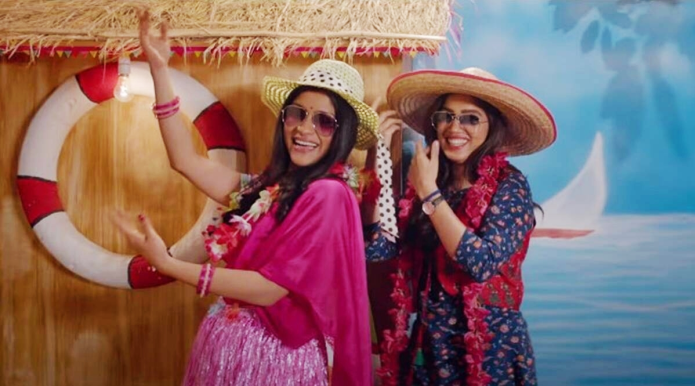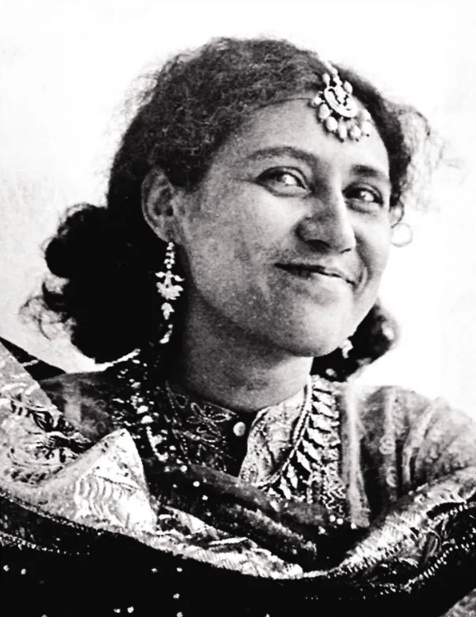
This post was originally posted here.
By
Sheelalipi Sahana
January 29, 2021
—
In 1932, four Urdu writers caused a furore with their publication of Angaarey (Burning Coals), a collection of short stories and plays. This served as the manifesto inaugurating the Progressive Writers Movement and harkening a ban on the anthology on the grounds of religious obscenity. Of this quartet, Rashid Jahan was severely critiqued for enunciating, in Behind the Veil and A Tour of Delhi, the plight of women bound to their homes and acting as pleasure-serving vehicles for their husbands.

In A Tour Of Delhi, Rashid Jahan calls attention to the cloistered lives of suburban housewives— including the women who derive satisfaction from Malika’s tale, which despite being uneventful, still positions her above the rest, simply for having made the journey.
Within two-three pages, Jahan’s Dilli Ki Sair (A Tour of Delhi) recounts the story, narrated by Malika Begum to other congregated housewives of her neighbourhood in Faridabad, of her recent ‘sair’ to Delhi with her husband by coach. On alighting onto the railway platform, Malika’s husband abandoned her and set off with the Station Master (his friend), leaving her to bide her time sitting on top of her luggage. Burqa-clad, she experiences a slew of lascivious looks and comments from strangers and passers-by, filling her with dread to the point that, when her husband returns hours later, she’s had her fill of the city (the little that she has seen) and resolves to end her day-trip and board the next train headed home.
Rashid Jahan calls attention to the cloistered lives of suburban housewives— including the women who derive satisfaction from Malika’s tale, which despite being uneventful, still positions her above the rest, simply for having made the journey. Translator Rakhshanda Jalil in her observations about the story, cites “the complete lack of sair-o-tafri (leisure-travel) in the lives of women” (p. 35-6) who were rarely allowed to step outside. The furthest they could go was the courtyard, observing purdah in the company of outsiders. This division of space is punctuated in the very first line of the story when a woman comes to hear Malika’s story. She calls out from the outer courtyard, “My dear sister, let me in” (p. 121); the female entourage huddle around in the inner courtyard, a space that straddles the line between public and private where women ‘hold court’.
Malika narrates to others her “wretched tour” with her husband. His nonplussed retort when she wants to leave — “As you wish! If you don’t wish to see the sights, don’t!” —cements the hierarchical nature of relationship shared between spouses. The husband who is in the position of power, leaves Malika at the station to fend for herself, while he gallivants with his friends, “eating at the hotel”. Her frustration due to hunger pangs, lurking gazes and her husband’s departure, results in her making the only decision that she can within her capacity as the wife. She refuses to entertain his travels any further, even if it means sacrificing her own chance at stepping outside the confines of her home. She cuts the trip short, asserting her limited “wish” to not “see the sights” after all. In her husband’s “sulks”, she wins a battle in the losing war on women’s autonomy of movement.

Close to a century after the publication of Angaarey, the Bollywood film Dolly Kitty Aur Who Chamakte Sitare (Dolly, Kitty and Those Shining Stars) [sic], redresses a wife’s attempt at leisure-travel, albeit to an assisted degree. The film, released in 2020 under the banner of Balaji Telefilms, explores two women’s sexual desire in a bildungsroman-esque manner that does not shy away from the complexities of reality such as adultery, sexual disorders and sex work. Available to stream on Netflix, it is a film that delivers on all counts, while gripping onto the patriarchal handle so as showcase real resistance, not utopia.
Here again a “wretched” trip to Delhi is brought up. Kitty accuses her cousin, the married Dolly of ‘not making anything of her life’, of slaving away without “seeing the Taj Mahal”. Kitty argues, “You’ve lived in Noida for years. You never go out to Delhi, except to catch trains. You’ve never even seen the Taj Mahal! You’ve done nothing in life! You’re surviving, not living!” Dolly has tried to shirk away from manifesting the carefree life that she sees Kitty living out. While initially appalled at Kitty’s lifestyle, we see Dolly eventually sharing similar passions that would not be deemed ‘appropriate’ for women. Unlike Malika begum, Dolly resolves to make the trip to Delhi without her husband. However, she is accompanied by her food delivery guy/lover as she still requires a man to drive her to the city and to show her around. For Dolly, transgressing marital confines is easier than the physical confines of small-towns. Through her lover Osmaan, she derives the mobility to move at her own pace and move further than she is used to.

Kitty underscores Jalil’s critique about the lack of leisure-travel for women when she says that Delhi is restricted to Dolly who only passes through the city, not making it further than the railway station. While husbands live out duplicitous lives free of social scorn, wives are expected to obsequiously wait for their return at home.
Kitty underscores Jalil’s critique about the lack of leisure-travel for women when she says that Delhi is restricted to Dolly who only passes through the city, not making it further than the railway station. While husbands live out duplicitous lives free of social scorn, wives are expected to obsequiously wait for their return at home.
What has changed in the depiction of women’s agency over the last 90 odd years? Rashid Jahan’s characterisation of Malika begum in A Tour of Delhi is of someone that, although does not make it past the gates of the railway station, does not shy away from retelling the incident to her friends and neighbours without shame. Owing to her high self-worth, the begum is able to condemn her husband’s carelessness without victimising herself. As Jalil notes, “there is a shared sense of bonhomie and cheerful acceptance: men are like that; women know it and can do nothing about it” (p. 36). In doing so, they are lamenting over missed opportunities while being cognisant of the extent to which they may ask for more. For Malika begum, the railway station is an upgrade from her inner courtyard, it is “so big that a fortress could not be bigger” (p. 121). “As far as the eye could go” (p. 121), she saw a fortress that, despite being big, is still an enclosed space.
In Dolly Kitty Aur Who Chamakte Sitare [sic], Dolly changes the infrastructure of her vision by stepping out of the station onto open roads. As Osmaan drives on the highway, Dolly rolls down the car window and relishes the gusts of wind on her face. She alleviates her immobility by reaching out to someone that figuratively and literally drives her away from her marital confines. After nine decades, the wife is able to change her fortress into a highway.
References
Jahan, Rashid. “A Tour of Delhi”. A Rebel and Her Cause. Translated by Rakhshanda Jalil. Women Unlimited, 2014.
Jalil, Rakhshanda. “Rashid Jahan ‘Angareywali’”. A Rebel and Her Cause. Women Unlimited, 2014.
Dolly Kitty Aur Woh Chamakte Sitare. Directed by Alankrita Shrivastava, Balaji Telefilms, 2020, Netflix, https://www.netflix.com/title/81285942?s=i&trkid=13747225.
Sheelalipi Sahana (she/her) is a student of modernism and a purveyor of the feminist principle. She is currently a PhD researcher at the University of Edinburgh. You can find her on Instagram, and Twitter.
Cover Image: Netflix Promotional Image